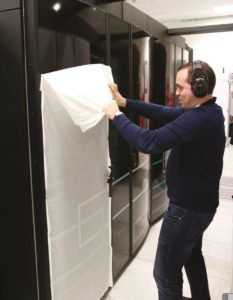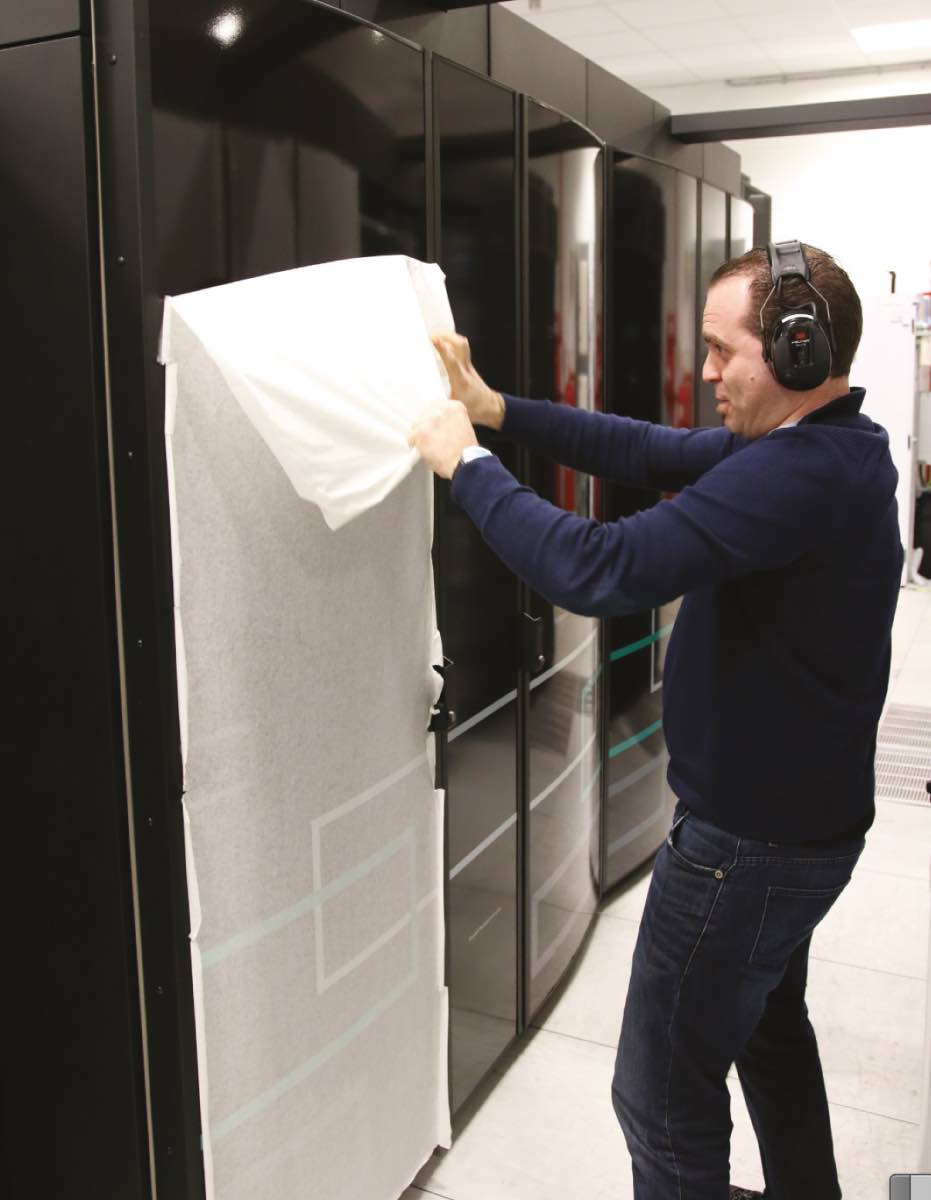 Over at EPCC, Professor Peter Boyle describes the new Tesseract supercomputer, which is hosted at EPCC’s Advanced Computing Facility. DiRAC is part of the UK’s e-infrastructure investment to improve computing, software development, data storage, networking and distributed computing networks.
Over at EPCC, Professor Peter Boyle describes the new Tesseract supercomputer, which is hosted at EPCC’s Advanced Computing Facility. DiRAC is part of the UK’s e-infrastructure investment to improve computing, software development, data storage, networking and distributed computing networks.
In January 2018, EPCC’s Advanced Computing Facility retired the STFC’s DiRAC BlueGene/Q service. In March it was replaced by a new Extreme Scaling system, an 844-node HPE SGI 8600 supercomputer. Each node has two Xeon scalable processor 4116 “Silver” nodes, and 96 GB of memory. In total, the new system has 20256 Intel Skylake computing cores, and is interconnected using 100 Gbit/s Intel Omnipath interconnect.
Based on SGI ICE-XA technology, the Tesseract system uses a tightly coupled network and energy-efficient water cooled technology. Like its predecessor, the system is uniquely optimized for Cartesian PDE problems that arise in computational particle physics simulations.
In a unique configuration, Tesseract makes use of an exact power of two (16) nodes on each leaf switch, assisting the science by placing the Cartesian problems precisely on the underlying hypercube network topology. In fact, the name Tesseract highlights this unique use of topology and customization to the target problems.
In addition to carrying out the critical infrastructure installation and system configuration work required to install and operate the system, the ACF and HPE teams have assisted STFC scientists in demonstrating that large computing jobs can run all the interconnect links concurrently at wire speed, making for a highly scalable simulation platform for the target class of problem.
According to Boyle, Tesseract is available for commercial use. Contact EPCC’s Commercial Manager, to find out more.




